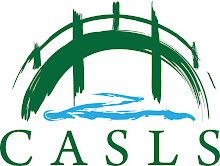From http://linguistlist.org/issues/22/22-3185.html
Ishara Press and De Gruyter Mouton are pleased to announce the copublication of two new series in sign linguistics:
Sign Languages and Deaf Communities (SLDC)
Series editors: Annika Herrmann, Markus Steinbach and Ulrike Zeshan
Over the past decades, the field of sign language linguistics has expanded considerably. Recent research on sign languages includes a wide range of subdomains such as reference grammars, theoretical linguistics, psycho- and neurolinguistics, sociolinguistics, and applied studies on sign languages and Deaf communities. The new series Sign Languages and Deaf Communities is concerned with the study of sign languages in a comprehensive way, covering various theoretical, experimental, and applied dimensions of sign language research and their relationship to Deaf communities around the world. This series provides a multidisciplinary platform for innovative and outstanding research in sign language linguistics and aims at linking the study of sign languages to current trends in modern linguistics, such as new experimental and theoretical investigations, the importance of language endangerment, the impact of technological developments on data collection and Deaf education, and the broadening geographical scope of typological sign language studies, especially in terms of research on non-Western sign languages and Deaf communities.
Sign Language Typology (SLT)
Series editors: Marie Coppola, Onno Crasborn and Ulrike Zeshan
The Sign Language Typology Series is dedicated to the comparative study of sign languages around the world. Individual or collective works that systematically explore typological variation across sign languages are the focus of this series, with particular emphasis on undocumented, underdescribed and endangered sign languages. The scope of the series primarily includes cross-linguistic studies of grammatical domains across a larger or smaller sample of sign languages, but also encompasses the study of individual sign languages from a typological perspective and comparison between signed and spoken languages in terms of language modality, as well as theoretical and methodological contributions to sign language typology.
For fuller details, go to http://linguistlist.org/issues/22/22-3185.html
August 21, 2011
Subscribe to:
Post Comments (Atom)





No comments:
Post a Comment
Note: Only a member of this blog may post a comment.